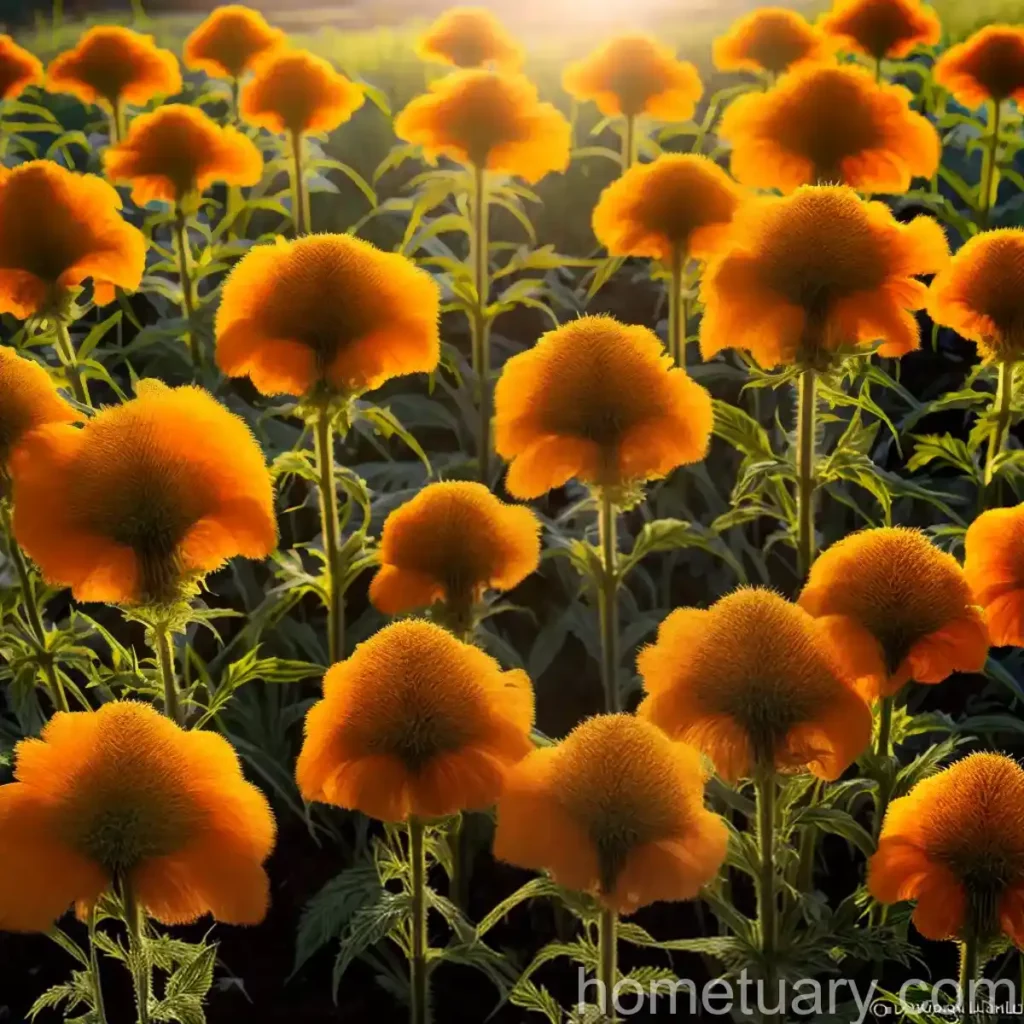Lion’s Ear (Leonotis leonurus): A Comprehensive Guide
Lion’s Ear, also known as “Leonotis leonurus,” is a striking and versatile plant that has gained popularity due to its unique appearance and diverse uses. In this comprehensive guide, we will delve into the various facets of this remarkable plant, including its cultural significance, uses, and essential care tips for cultivation.
What is Lion’s Ear (Leonotis leonurus)?
Lion’s Ear, scientifically known as Leonotis leonurus, is a species within the Lamiaceae family, native to Southern Africa. It is commonly referred to as lion’s ear, lion’s tail plant, wild dagga, or lion’s claw herb, owing to its distinctive flower spikes and traditional medicinal uses.
The plant is characterized by its vibrant orange tubular flowers, which attract a multitude of pollinators, including birds and insects. Its cultural significance and versatile properties have contributed to its widespread cultivation and appreciation beyond its native region.
Key Takeaways – Lion’s Ear (Leonotis leonurus)
Culture
- Historical Significance: Lion’s Ear holds a prominent place in traditional African medicine and folklore, where it has been utilized for various medicinal purposes and cultural rituals.
- Symbolism: The plant is revered for its spiritual properties and symbolism in herbalism, herbal remedies, and traditional medicine, reflecting its deep-rooted cultural significance.
Uses
- Medicinal Properties: Lion’s Ear is valued for its medicinal properties, with its leaves and flowers being used in herbal remedies, herbal teas, and tinctures.
- Ornamental Value: Its striking appearance and vibrant flowers make it a popular choice for ornamental and landscaping purposes.
Water
- Water Requirement: Lion’s Ear thrives in well-drained soil and is moderately drought-tolerant. It requires regular watering during its initial growth phase, after which it can withstand periods of drought.
Sunlight
- Optimal Sun Exposure: The plant flourishes in full sun to partial shade, making it adaptable to a wide range of sunlight conditions.
Fertilizer
- Nutrient Requirements: Lion’s Ear benefits from balanced fertilizer applications during the growing season, enhancing its overall growth and blooming potential.
Soil
- Soil Type: It thrives in a variety of soil types, provided they are well-drained. However, it prefers sandy or loamy soil with a slightly acidic to neutral pH.
Pruning
- Pruning Technique: Regular pruning is beneficial to maintain the plant’s shape and encourage new growth. Trimming the flower spikes after blooming can promote a more compact and bushy appearance.
Propagation
- Propagation Methods: Lion’s Ear can be propagated through seeds, cuttings, or division. Each method offers its own set of advantages, with seeds being ideal for growing new plants from scratch.
Container Popularity
- Container Gardening: Its adaptability to container cultivation makes it an excellent choice for urban or small-scale gardens, allowing enthusiasts to enjoy its captivating blooms in a limited space.
Common Diseases
Lion’s Ear, like many plants, can be susceptible to certain diseases that can impact its overall health and vigor. Some common diseases that may affect Lion’s Ear include:
-
Powdery Mildew: A fungal disease that appears as a white, powdery substance on the leaves, affecting the plant’s ability to photosynthesize and potentially causing leaf distortion.
-
Rust: This disease manifests as orange or rusty patches on the undersides of the leaves, leading to premature leaf drop and reduced vitality.
-
Leaf Spot: Characterized by dark, water-soaked spots on the leaves, this disease can lead to defoliation if not addressed promptly.
Disease Diagnosis
Identifying the specific disease affecting Lion’s Ear is crucial for implementing targeted management strategies. Visual symptoms, such as discoloration, spots, or unusual growth patterns, can provide valuable insights into the underlying issue. Additionally, conducting a thorough assessment of environmental conditions and cultural practices can aid in diagnosing and addressing the problem effectively.
Common Pests
Pests can pose a challenge to the health and appearance of Lion’s Ear, requiring vigilant monitoring and appropriate interventions. Some common pests that may affect the plant include:
-
Aphids: These tiny, sap-sucking insects can colonize the tender growth of Lion’s Ear, impacting its overall vigor and causing leaf distortion.
-
Spider Mites: These arachnids can inflict damage by feeding on the plant’s chlorophyll, leading to yellowing and stippling of the leaves.
-
Whiteflies: Infestations of whiteflies can weaken the plant by draining its sap and causing the development of sooty mold on the leaves.
Botanist’s Tips
- Pollinator Attraction: Lion’s Ear serves as a valuable resource for pollinators, including bees, butterflies, and birds. By cultivating this plant, enthusiasts can contribute to promoting biodiversity and supporting local ecosystems.
- Cultural Significance: Recognizing the historical and cultural significance of Lion’s Ear enriches the gardening experience, fostering an appreciation for its traditional uses and symbolism.
Fun Facts
- Ethnobotanical Uses: Lion’s Ear has been employed in various traditional African rituals and ceremonies, reflecting its enduring cultural importance.
- Landscape Appeal: The vibrant orange flowers of Lion’s Ear make it an eye-catching addition to garden landscapes, adding a touch of exotic charm.
Links to External Resources
To further explore the diverse aspects of Lion’s Ear and expand your knowledge on this captivating plant, we recommend exploring the following resources:
- Royal Horticultural Society – Leonotis leonurus
- Missouri Botanical Garden – Leonotis leonurus
- Australian National Botanic Gardens – Leonotis leonurus
In conclusion, Lion’s Ear (Leonotis leonurus) stands as a captivating plant with a rich history, multifaceted uses, and ornamental appeal. By embracing its cultural significance and implementing effective care practices, plant enthusiasts can enjoy the beauty and benefits of Lion’s Ear in their gardens and landscapes. Whether for its medicinal properties, ecological contributions, or aesthetic allure, this remarkable plant continues to captivate the interest of gardeners and botany enthusiasts worldwide.















